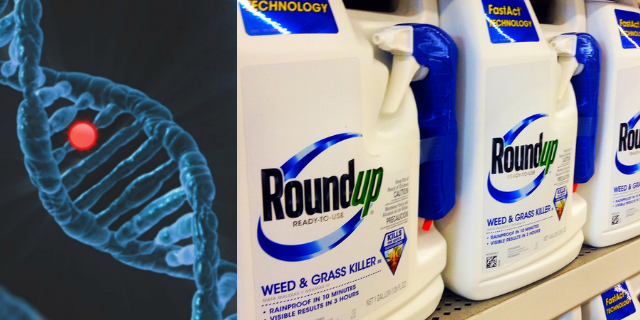31
Jan
Glyphosate Induces Oxidative Stress, A Cancer Precursor, According to NIH Study

(Beyond Pesticides, January 31, 2023) Glyphosate exposure induces oxidative stress in the body, a key biomarker known to heighten an individual’s risk of cancer, according to research published in the Journal of the National Cancer Institute by a team of scientists from the National Institutes of Health. The findings, which tracked study participants’ past use of glyphosate and exposure levels through urine, are particularly concerning in light of recent data showing that four out of five (81.6%) U.S. residents have detectable levels of glyphosate in their bodies. Despite these concerning data, evidence of widespread exposure to a carcinogen has so far failed to sway regulators at the U.S. Environmental Protection Agency, necessitating meaningful change by elected officials to reform pesticide regulation.
Scientists began with the determination from the International Agency for Research on Cancer (IARC) that there is epidemiological evidence associating glyphosate with blood cancers like non-Hodgkin lymphoma, and strong evidence of carcinogenicity in laboratory animal research brought on by genotoxicity (DNA damage) and oxidative stress. “Oxidative stress occurs when the production of reactive oxygen species (ROS) and other free radicals exceeds the body’s antioxidant defense mechanisms, causing damage to DNA, proteins, and lipids,” the study explains. This process can occur naturally through age, but also because of exposure to external stressors like pesticides and other chemicals. Oxidative stress is likewise known to be associated with the development of blood cancers.
To better understand the risk borne by farmers, applicators, and the general public, researchers studied a cohort of individuals enrolled in the Biomarkers of Exposure and Effect in Agriculture (BEEA) study, part of the long-running U.S. Agricultural Health Study, which tracks how agricultural, lifestyle, and genetic factors affect the health of farming communities. A total of 369 BEEA participants took part, and four subgroups were established, determined by their reported glyphosate use. The first group included farmers that had used glyphosate within the week before urine collection; the second included farmers with the highest reported lifetime exposure to glyphosate, but had not used the chemical within the last week; the third included farmer controls with little to no occupational glyphosate use; and the fourth group included non-farming controls with no home or garden use of glyphosate within the last week. The urine of each of these groups were collected and tested for the presence of oxidative stress biomarkers. Variables such as age, lifestyle, and other pesticide use were incorporated and adjusted for.
Farmers using glyphosate within the prior week had the highest urinary glyphosate levels, with rates falling from lifetime exposed farmers, to farming and nonfarming controls. Concentrations of oxidative stress biomarkers rose alongside increasing urinary glyphosate levels. Oxidative stress levels were elevated among farmers with recent and high lifetime use of glyphosate.
Researchers note that a single previous study of Greek farmers found similar results with the biomarker 8-OHdG, showing those that recently sprayed glyphosate with the highest concentrations. “Given that 8-OHdG reflects oxidative stress-induced DNA damage, our findings for 8-OHdG also support the genotoxic potential of glyphosate in humans and strengthen existing evidence from studies that have reported associations between glyphosate exposure and increased DNA damage, assessed as DNA strand breaks or micronucleus formation,” the study explains.
While recent exposure appears to display the greatest evidence of oxidative stress, the study did find evidence that long-term exposure is likewise associated with this dangerous process, which can lead to the development of cancer. This adds considerable weight to the arguments put forth by the individuals suing Bayer over their cancer diagnosis, as the aggrieved cite long-term use as part of their legal challenge.
In addition to blood cancer, there is evidence that glyphosate may prime breast cells for the development of cancer when combined with other oxidative stressors. “Showing that glyphosate can trigger tumor growth, when combined with another frequently observed risk, is an important missing link when it comes to determining what causes cancer,” Sophie Lelièvre, PhD, professor of cancer pharmacology in Purdue’s College of Veterinary Medicine indicated.
Beyond cancers, glyphosate-induced oxidative stress has also been implicated as the reason why high exposure to the chemical is associated with shorter pregnancy length and pre-term births.
Despite glyphosate being nearly ubiquitous in the environment, the best way to lower levels and reduce risk of oxidative stress brought on by glyphosate exposure is to go organic. Multiple studies have shown that switching to an organic diet will reduce one’s urinary concentration of glyphosate and other toxic pesticides. Evidence shows that even eating a healthy, Mediterranean diet falls short on health benefits unless the food is organic and devoid of toxic synthetic pesticide sprays.
While individuals can go organic, we must collectively address the systems that perpetuate the use of glyphosate, and harm the farmers and farmworkers that grow our food, as well as the individuals who may casually purchase and apply toxic pesticides to their yard and garden without consideration. Glyphosate, and other toxic pesticides like it, have viable alternatives that can readily replace their use on both farms and landscapes. Help build the political will to take action by urging the Biden Administration, EPA, and Congress to adopt a new direction on pesticide regulation that challenges the so called “benefits” of pesticides, protects workers and children, and safeguards pollinators and broader biodiversity.
All unattributed positions and opinions in this piece are those of Beyond Pesticides.
Source: Journal of the National Cancer Institute










